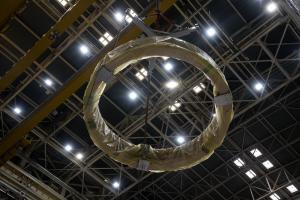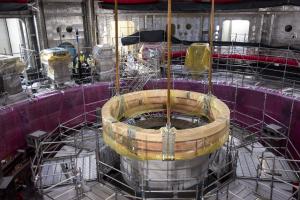A set of spares for the long journey
For the poloidal field coils, which are all unique, manufacturing spares was not conceivable and a different solution was devised. Each coil has a spare double pancake embedded in its structure and is equipped with a system that allows for "bridging" any possible faulty double pancake using jumpers outside the coil.
The spare pre-compression rings have been installed early as "captive" components under the vacuum vessel and toroidal field coils. Using them as spares to replace one, or a whole set, of faulty pre-compression rings, however, would be an extremely delicate operation that would necessitate the removal of the central solenoid and require at least six months. In addition, it would only be possible before full-power operation¹.
The pre-compression rings are designed to outlive the ITER machine and the probability of a failure is extremely low. In addition, there are margins in the design that would allow the machine to operate with one failed ring or with a partial loss of pre-load from the whole set. In this context, the spare rings are a second level of back up to ensure that, whatever that the hardships encountered, the journey will continue.
¹The forces exerted on the pre-compression rings during the first phase of operations will be the same as those they will face during the full-power phase. Should a failure occur, it would be during the first few years of machine operation.



